24 Article III: Major and Minor Scales in Two Octaves
The learner now knows all of the positions except thumb position, and can now focus on the study of scales—which are the cornerstone of every finger technique. The fingering for all major and minor scales is one and the same. The following should be noted:
If you take the two-octave scale (including the tonic at the top) as a series of 15 notes and divide them into groups of three notes, you get five groups—each bordered by the interval of a third.
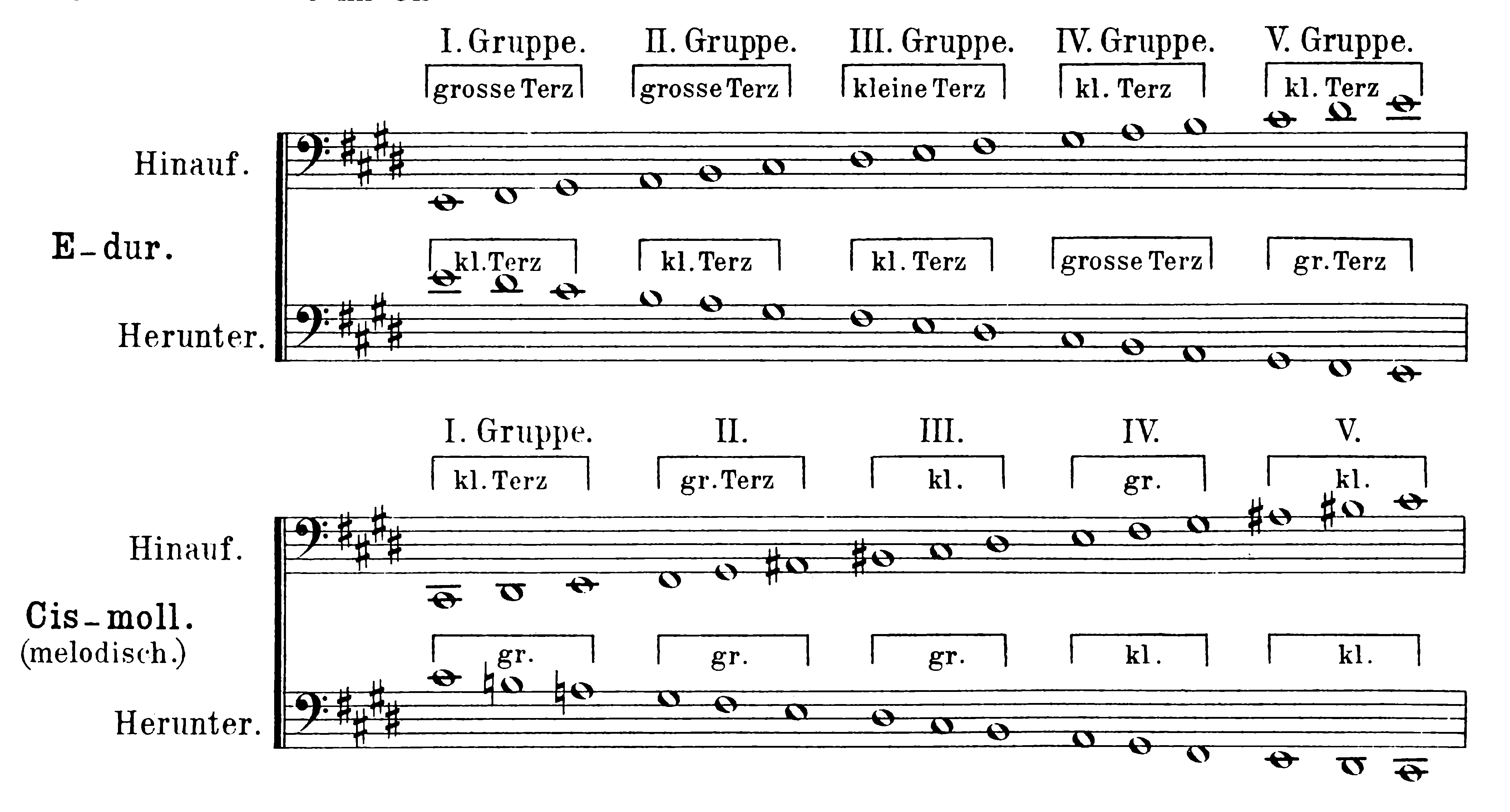
* Gruppe = “group”
Grosse Terz and kleine Terz = “major third” and “minor third”
Hinauf and herunter = “ascending motion” and “descending motion”
E-dur and Cis-moll (melodisch) = “E major” and “C-sharp minor (melodic)”
The major scale, when broken down in this way, consists of two major and three minor thirds in ascending motion, and the opposite in descending motion. The ascending minor scale consists of alternating minor and major thirds, and in descending motion, three major and two minor thirds. As we know, the interval of a third can be played in any position with the first and fourth fingers: in extended position for the major third, and in closed position for the minor third. In this way, we can find the fingering for all scales if we begin with the first finger; we approach a new position with the first finger after every three notes.
Fingering for the Major Scale
In ascending motion: 1-2-4, 1-2-4, 1-2-4, 1-2-4, 1-3-4.
In descending motion: 4-3-1, 4-2-1, 4-2-1, 4-2-1, 4-2-1.
Fingering for the Minor Scale[1]
In ascending motion: 1-3-4, 1-2-4, 1-2-4, 1-2-4, 1-3-4.
In descending motion: 4-2-1, 4-2-1, 4-2-1, 4-3-1, 4-3-1.
Minor thirds are fingered with 1-2-4 or 1-3-4 patterns, depending on position of the half-step. In higher registers, of course, the third finger would play instead of the fourth.
The given fingering rule would be absolute for all major and minor scales if there were no open strings. The above fingering, therefore, works for scales in which no open strings can occur.
Aside from the fact that the scales of C and G cannot begin with the first finger, the open strings modify the fingering insofar as they make it possible to play some scales entirely and others partly in first position. This is a welcome relief to the beginner, though the advanced player often prefers to avoid open strings because they may stand out from the other notes due to their brighter tone color.
In the following list of all major and minor scales, the fingering above the staff is the usual one. The fingering under the staff—which offers alternative fingerings to open strings—serves as proof that scales containing open strings can also be played according to the finger pattern rule.
In studying scales, it is advisable to visualize the position clearly each time. For example, in E major, the series of positions is as follows:

*Saite = “string”
Spannung = “hand position” (gr. = “extended”; kl. = “closed”)
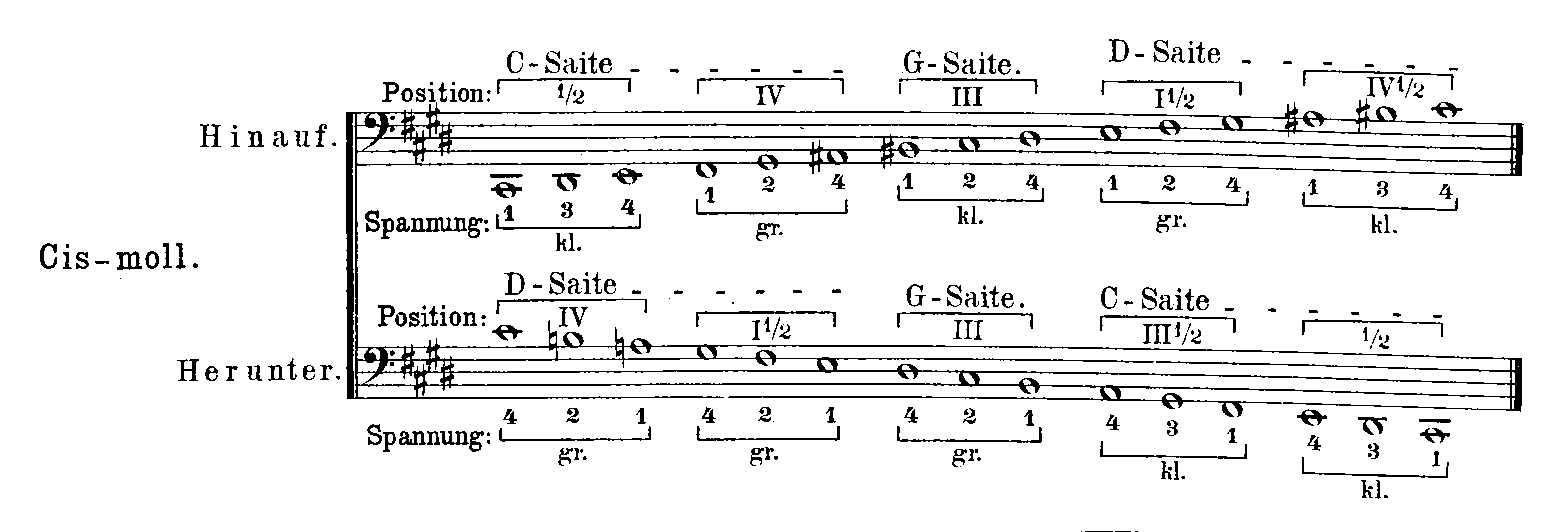
*Cis-moll = “C-sharp minor”
Hinauf = “ascending motion”; herunter = “descending motion”
Fingering for All Major and Minor Scales in Two Octaves[2]
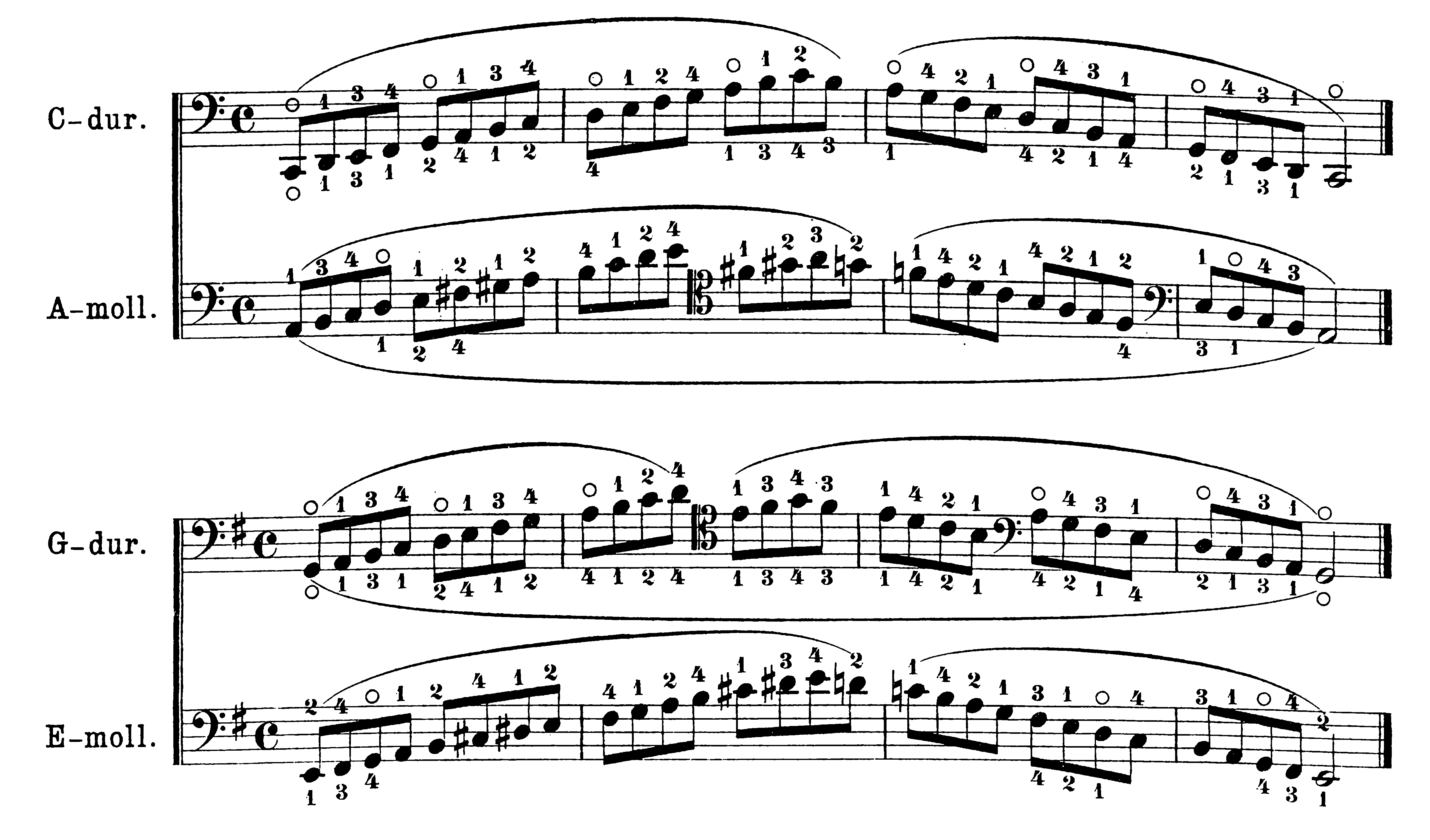
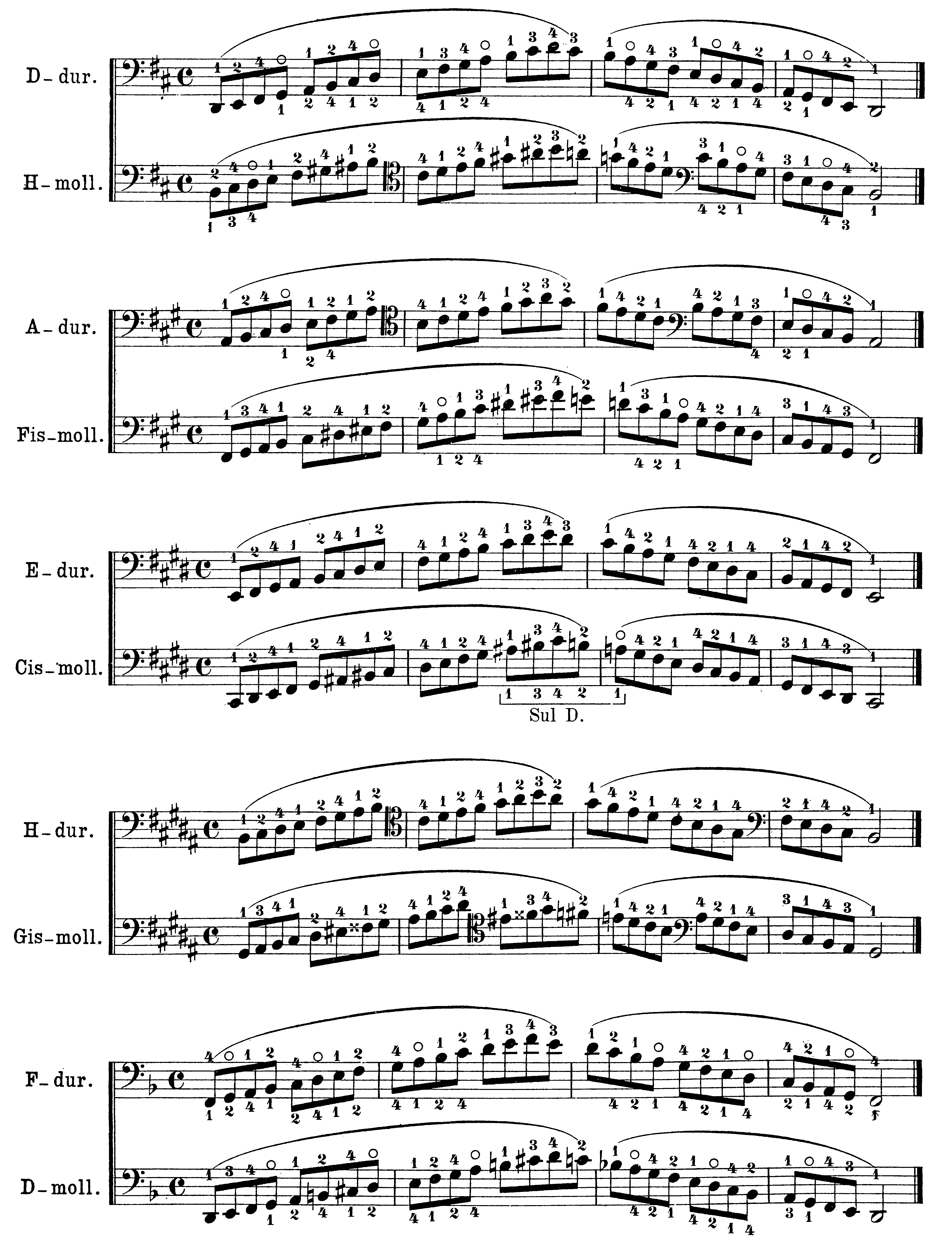
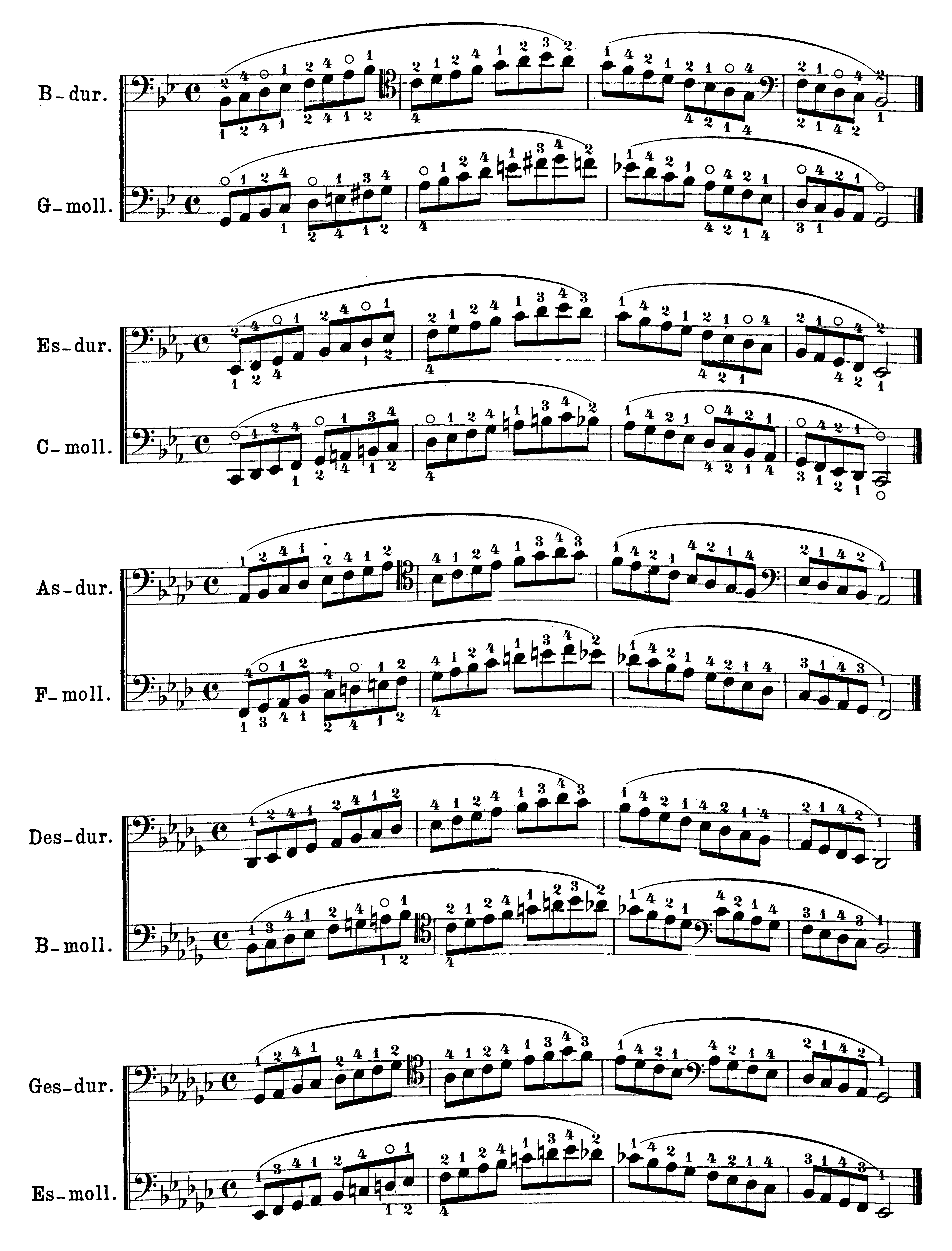
- Translator’s note: Davidoff’s fingering describes the finger patterns of the melodic minor scale. For the harmonic minor scale, the pattern would be 1-3-4, 1-3-4, 1-2-4, 1-2-4, 1-3-4 in ascending motion (and the exact reverse for descending motion). ↵
- Translator's note: though English-speaking cellists can figure out the meanings of German musical terms from the context, it's worth noting that in German, -dur is "major" and -moll is "minor." The German musical alphabet has a few features that are different from English; the two most confusing for English speakers are the use of "B" for B-flat and "H" for B natural. Additionally, German speakers use Fis for F-sharp, Cis for C-sharp, Es for E-flat, As for A-flat, Des for D-flat, and Ges for G-flat. ↵
